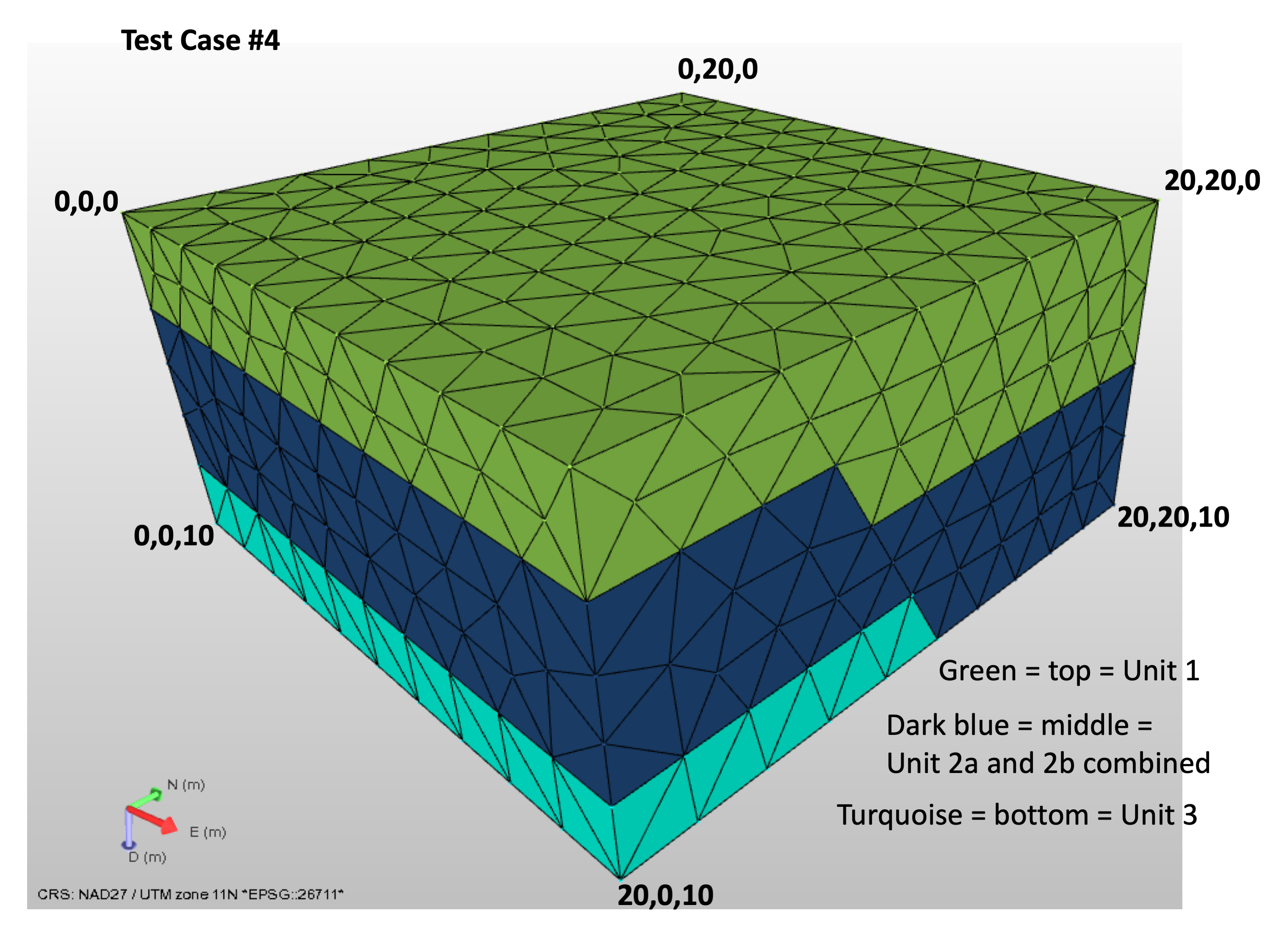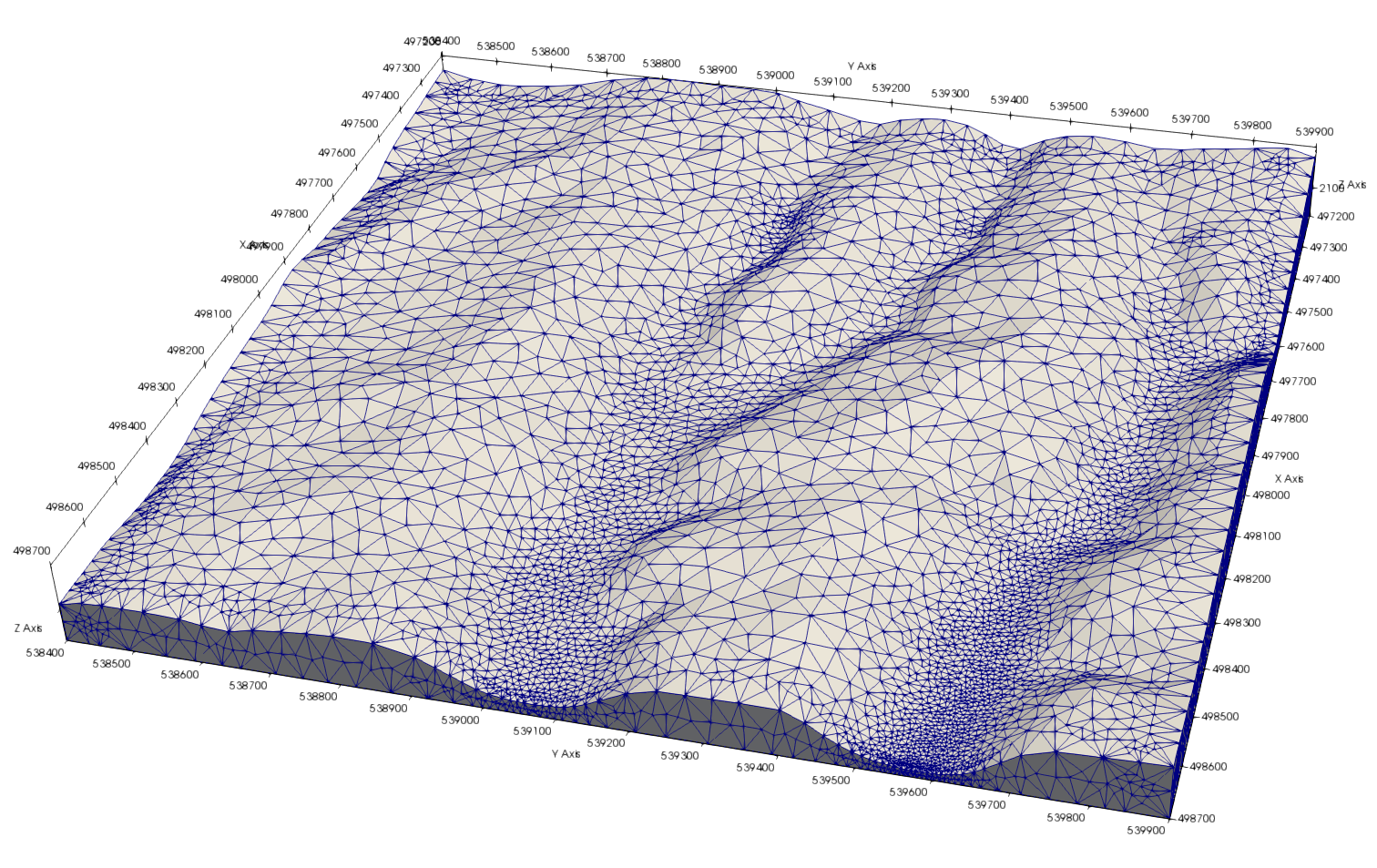
All Images for Alluvial Basin Workflow
GitHub Repository for Workflow Files
The Spent Fuel and Waste Science and Technology (SFWST) Campaign of the U.S. Department of Energy (DOE) Office of Nuclear Energy (NE) is tasked with conducting research and development (R&D) related to the geological disposal of spent nuclear fuel (SNF) and high level nuclear waste (HLW). Two high priority topics for SFWST R&D are to create design concepts and numerical modeling approaches for disposal systems.
A part of the Geologic Disposal Safety Analysis (GDSA) is Geology Integration which includes: 3D Geologic Framework Software, an UZ Reference case for Alluvial Basin (LANL and SNL), and a Shale Reference Case (SNL). The use of VoroCrust is being explored for Voronoi polyhedral meshing to automate and make more efficient part of the model setup workflow as well as increase the accuracy of the flow and transport simulations.
LA-UR-23322:
2019 LANL Contribution to Salt-GDSA Integration
Fuel Cycle Research & Development
US Department of Energy Spent Fuel and Waste Science and Technology Milestone M3SF-19LA010303012
P.H. Stauffer, J.J. Beisman, C.W. Gable, D.R. Harp, T.A. Miller, E.J. Guiltinan LANL, M. Ebeida Sandia

|
Project Page for Alluvial Basin Workflow
All Images for Alluvial Basin Workflow GitHub Repository for Workflow Files |
This work builds an Alluvial Basin Geologic Framework (GFM) which is used to create a computation mesh used in Modeling simulations.
Portions of the workflow use well developed methods using LaGriT for meshing and FEHM for model setup. The JewelSuite GFM is new, and the integration between the steps need development.
Workflow for Alluvial Basin Meshing:

|
Project Page for VoroCrust Meshing
Unit Cubes VoroCrust Images JewelSuite Tests VoroCrust Images Mortandad Mesa VoroCrust Images Mortandad Mesa Thin Layer VoroCrust Images |
This work explores the use of VoroCrust software to create Voronoi mesh files for FEHM/PFLOTRAN type modeling applications.
VoroCrust will be used to mesh various geologic models and methods for VoroCrust input and output methods will be explored for integration into the work flow.
SNL is working with VoroCrust to develop Vornonoi mesh files for PFLOTRAN for use in their Shale model task for GDSA Integration.
LANL is working with VoroCrust to develop a meshing workflow for FEHM/FLOTRAN type models in general.
VoroCrust Abstract arxiv.org/abs/1902.08767
VoroCrust: Voronoi Meshing Without Clipping PDF
VoroCrust Supplemental Materials
PDF